TRASHY TUESDAY: POWS AND THE WAR AGAINST THE JAPANESE!
World War II left a heavy mark on society, and not surprisingly it featured prominently in popular fiction well into the 1960s and 70s. In Australia a lot of the attention was on the war in the Pacific and the battles with the Japanese. There also emerged in the 1960s a sub-genre of men’s adventure books about Australian soldiers and nurses being held as prisoners of war and the tortures they experienced under the Japanese. These books usually focussed on the cruelty of the Japanese guards and fed off the strong resentment towards the Japanese that still existed in the 1960s (and probably longer). Often these books had a particularly perverse fascination with the degradation of “white women” by the Japanese (for example see my earlier article on the John Slater POW novels: https://murdermayhemandlongdogs.com/trashy-tuesday-japanese-horror-camps-the-john-slater-pow-novels/ )
In recent book hunts I have come across several war books, which focussed on jungle fighting and Japanese atrocities.
Horwitz Publishing produced several series in the 1960s that focussed on the experiences of POWs, particularly Australian nurses, including the Jim Kent and John Slater series of books, with titles like Camp Of Terror, Sin Camp and Slave Women.
In addition to writing most of the John Slater books, Ray Slattery also penned several POW and war books under his own name. Slaves Of The Samurai (Horwitz, 1963) is probably one of his better known titles and features a stunningly brutal illustration by Australian cover art maestro Col Cameron. The cover certainly catches attention and it is easy to see how popular fiction in Australia helped to maintain resentment against the Japanese into the 1960s and 1970s.
Beasts Of Bushido (Scripts Horwitz, 1967) also features a striking Col Cameron cover with one of his typical blood orange backgrounds. Encapsulating Japanese brutality and Australian mateship, it is another powerful cover.
Michael Owen was ‘house name’ used by Horwitz for some of its war titles, and Beasts Of Bushido was actually written by C. J. McKenzie.
I have previously reviewed another Michael Owen book, The Coastwatchers (1965), here: https://murdermayhemandlongdogs.com/trashy-tuesday-the-coastwatchers-by-michael-owen-horwitz-1965/
Horwitz also had several series which focussed on battles and military engagements. The most famous of which were the war novels by J. E. Macdonnell, but there were also others, including the Commando/War Series and the Roger Hunt series.
The Drongoes Who Dared by Roger Hunt (possibly Richard Wilkes-Hunter) was originally released under Horwitz’s Commando/War Series in 1960, but was then repackaged as the second book in the Roger Hunt Series in 1962.
The cover by comic artist John Dixon has a more innocent feel to it, than the POW covers by Col Cameron, and is fairly typical of the war novels of the period, which usually featured bronzed Aussies in khaki doing battle against greater numbers. There is a British Commando comic feel to the cover with its yellow bullet trajectory and unlikely explosion.
I do like the use of Drongoes (Australian slang for no hopers) in the title.
The Rats In New Guinea (Horwitz, 1962) by journalist and author Lawson Glassop is a more serious book and was based on Glassop’s experience writing for an Army Newspaper during World War II. Glassop’s previous book about the Australian defence of Tobruk (We Were The Rats) was found to be obscene by a Magistrate in 1946, mainly because of the repeated use of the word ‘bloody’.
The cover is actually a really good illustration and quite evocative. The artist is not identified.
Like Glassop, T. A. G. (Tom) Hungerford was an Australian writer and journalist who served with the Australian Army during World War II. The Ridge And The River (1952) is his best known novel, and this 1958 Panther edition features a nice uncredited cover, that eschews the more sensationally approach usually taken by Horwitz.
During my book hunting I also found two Asian war novels by British authors. The Digit edition of The Time Of The Locust (1960) by David Horsley features a nice effective cover by British artist R.A. Osborne, who did a number of good covers for Corgi and later Digit.
The 1977 New English Library (NEL) edition of Bamboo Guerillas (below) by Guy N. Smith features one of their typically violent and bloody covers (uncredited). Guy was best known for his pulp fiction-style horror, including Night Of The Crabs, and the plot of Bamboo Guerillas is reminiscent of the much earlier Jim Kent novels, with a British Captain leading a band of Chinese guerillas to rescue a group of nurses taken prisoner by the sadistic Colonel Sika. Far more graphic than the Horwitz novels, Bamboo Guerillas is a bloody, violent tale with lots of sadistic sex.

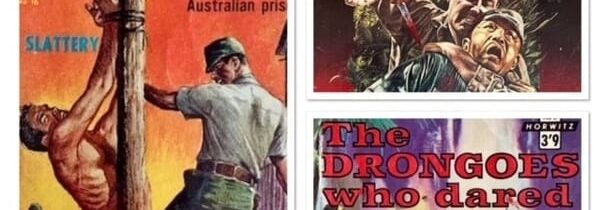
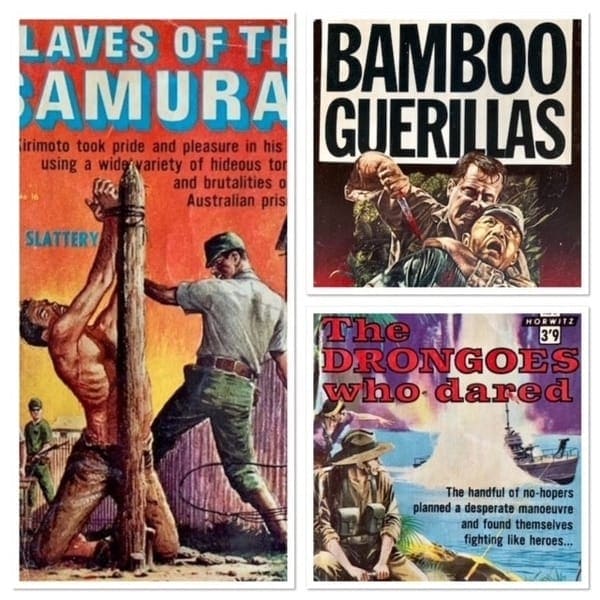
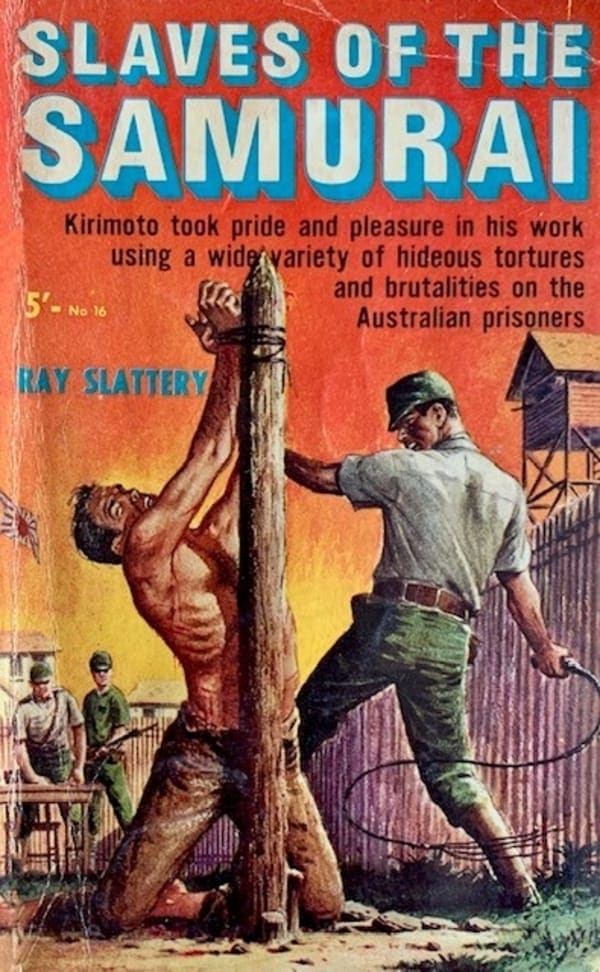
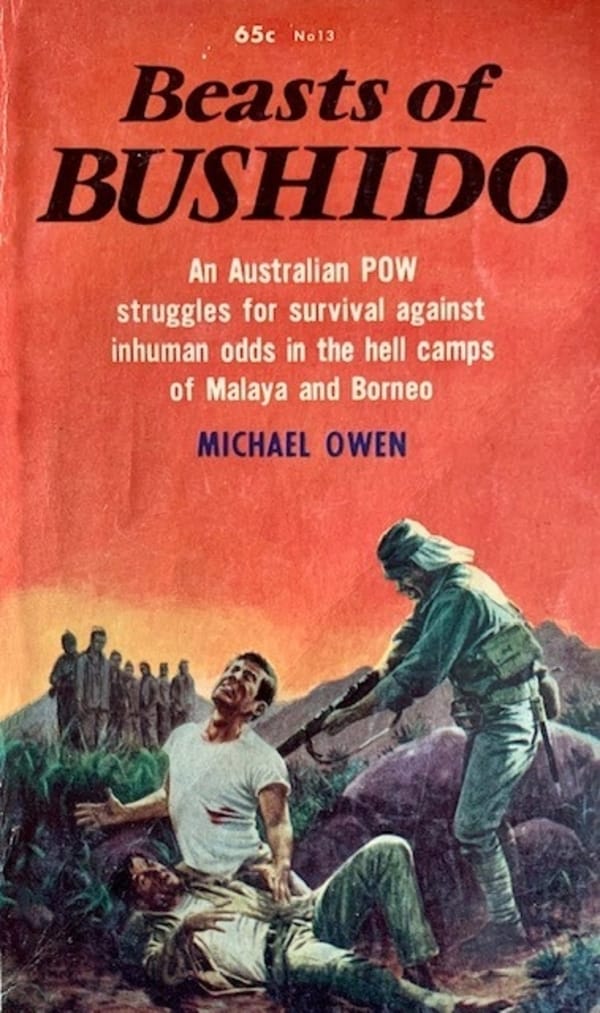
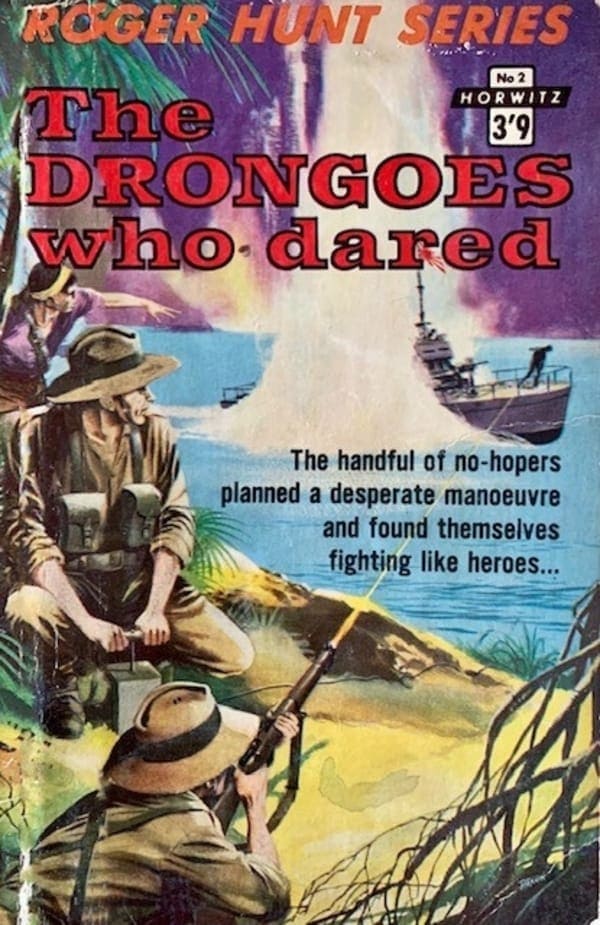
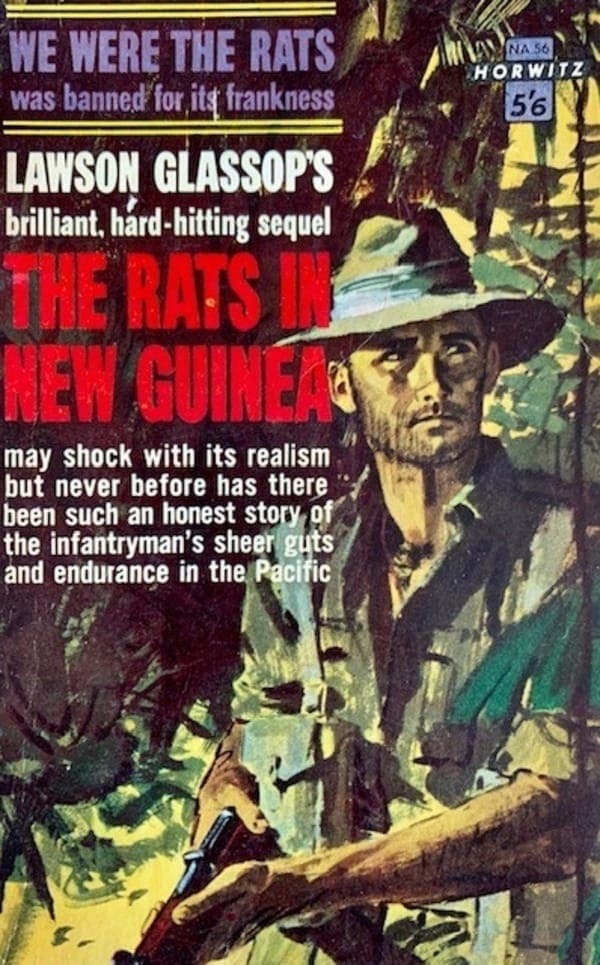


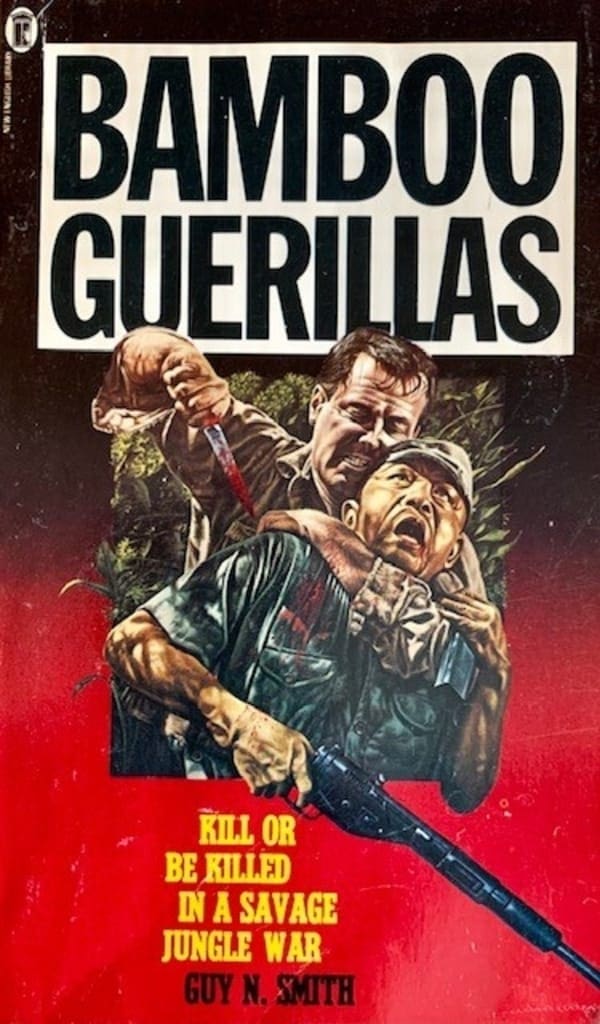
‘The Drongoes Who Dared’ : what a terrific title!
Yeah you don’t get titles like that anymore 🙂